Welcome to IFAST

International Foundation for Advancement of Surgical Telementoring
Surgical telementoring is the teaching of surgery from a distant location by remote presence.
The purpose of this non-profit organization is to create a global platform through which to share knowledge and experiences of telementoring and advancements of surgical education, with other medical doctors and surgeons around the world, and as a resource to keep such activities up to date.
Our Faculty and Leadership are surgeons and other professionals who teach through this medium and wish to relate their personal surgical approaches with the utilization of the various technical modalities currently available. We encourage you to join our membership, which currently is drawn from over 50 countries. Internationally, over 200 hospitals have shown their interest in developing improved patient care through this activity.
We will show in our library a bibliography of most of the published literature available as a resource for our members. Teaching videos by our Faculty will also be available in the Video Library. In addition, members may upload any video, deidentified as to patient name, to be shared with other members as a learning tool. The American Medical Foundation recently broadcast a two hour program on “Comparative Technology in Telementoring” with GlobalCastMD, now available on this site at all times.
A recent study using telementoring was based on a template for surgical education for new procedures and devices first developed by the Foundation for Advanced Medical Education (FAME) and studied in 2001, with a 2 million dollar grant to six US surgical societies. http://www.medicalfoundation.org/publications/
The template includes first, a didactic experience, utilizing the study of all important literature on a specific subject, including the observation of surgical videos. This is followed by simulation and other standard teaching tools. The third step: the preceptor-preceptee interaction is the most important. Unfortunately, Impediments such as travel, conflicting schedules, and physician or patient postponement, led to many cancellations of the necessary interactions in the original Grant. Thus a follow up study with a Grant to the Society of American Gastrointestinal and Endoscopic Surgeons (SAGES), by The American Medical Foundation, showed the effectiveness of telementoring to carry out this crucial third step to improve skills in the utilization of bariatric sleeves.
Please read our recently published newsletter, covering this study and many other aspects of surgical telementoring, with contributions from surgical experts all over the world. We plan another newsletter in the near future with information about the most recent innovations and telementoring experiences.
We hope this website will encourage world attention and collaboration for surgical telementoring as a helpful modality in providing safer treatment for patients.
Video: Comparative Technology in Telementoring
Comparative Technology in Telementoring
Watch a live interactive webcast with international surgical experts as they show and discuss actual cases using the currently available methods for surgical telementoring. Utilizing VisitOR1, off-the-shelf software services, and Google Glass, these studies will show the comparative strengths of each platform, and real-world tips will be shared. You and your institution will learn methods to improve skills and teach new procedures by remote presence. Watch the various “budget-friendly” ways to accomplish this goal.
This event was planned by The American Medical Foundation for Peer Review and Education, a leader in the organization and support of surgical telementoring initiatives. Read about the most current approaches already implemented in their publication “Surgical Telementoring News” edited by Evelyn Baram-Clothier, PhG, JD.